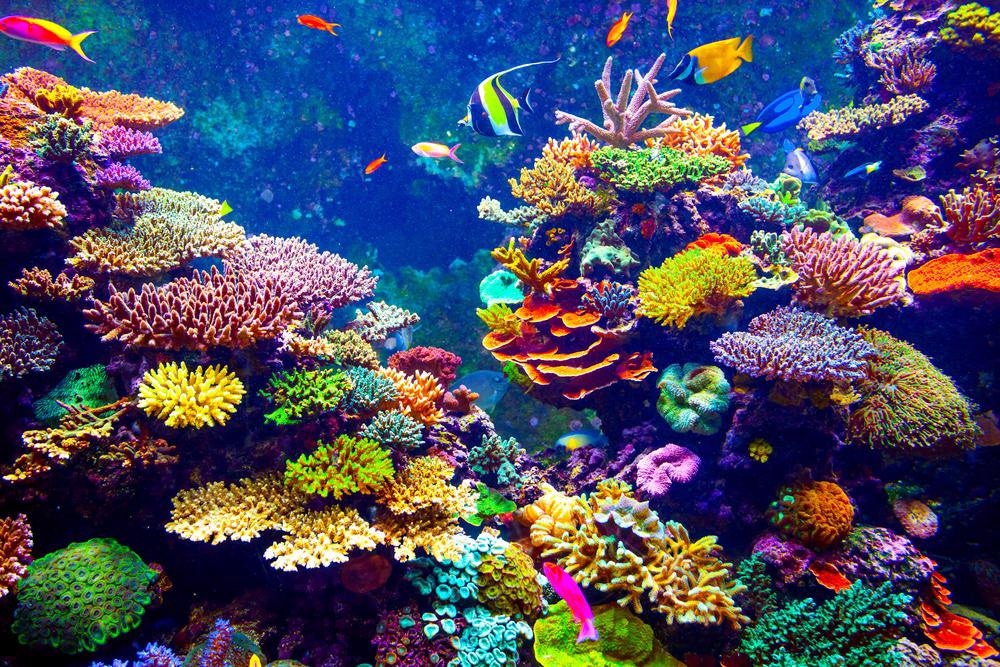A new study has disclosed the fact that pre-historic coral reefs as old as 250 million years have extended much beyond the Earth’s equator in the past.

Image Credit: Volodymyr Goinyk/Shutterstock.com
The new study, reported in the journal Nature Communications, illustrates how modifications in temperature and plate tectonics, where the positions of Earth’s continents were in highly different positions compared to today, influenced the distribution of corals over the ages.
Even though the climate has long been thought to be the primary driver of coral reef location, due to the scarcity of fossil records, this was yet to be established. For the first time, a group of international researchers has used habitat modeling and climate reconstructions to foretell the distribution of coral reef-friendly environments over the last 250 million years.
The scientists, from the University of Vigo, in Spain, the University of Bristol, and University College London in the UK additionally checked their forecasts by making use of fossilized proof of warm-water coral reefs.
They discovered that corals existed much further from the equator in the past, from 250 to 35 million years ago, owing to warmer climatic conditions and a more even distribution of shallow ocean floor.
Our work demonstrates that warm-water coral reefs track tropical-to-subtropical climatic conditions over geological timescales. In warmer intervals, coral reefs expanded poleward. However, in colder intervals, they became constrained to tropical and subtropical latitudes.
Dr Lewis Jones, Study First Author and Computational Palaeobiologist Research Fellow, University of Vigo
From about 35 million years ago, suitable coral habitats were confined to tropical regions given the global cooling and increases in shallow oceans caused by tectonic changes in the Indo-Australian Archipelago, which is known as a marine biodiversity hotspot.
Even though this implies that warm temperatures in the past allowed corals to expand poleward over long periods of time, the scientists believe coral reef ecosystems will not be able to keep pace with the fast rate of human-induced climate change.
Current anthropogenic climate change will result in the poleward expansion of suitable habitat for coral reefs. In fact, we are already witnessing the expansion of some tropical reef corals. However, whether coral reef ecosystems—and all the biodiversity they support—can keep pace with the current rapid rate of anthropogenic climate change is another question.
Dr Lewis Jones, Study First Author and Computational Palaeobiologist Research Fellow, University of Vigo
Jones added, “Limiting global warming is fundamental to saving coral reefs, as well as the biodiversity they house. Yet, perhaps even more important is reducing the rate of global warming.”
Warm-water coral reefs, also called the “rainforests of the sea”, support the biggest biodiversity of marine organisms on Earth. In oceans that are currently existing, biologically rich ecosystems, such as reef fishes, are restricted to the tropics and subtropics. Here, temperatures of the ocean surface normally do not fall under 18 ºC.
A considerable proportion of modern biodiversity has been discovered in the Indo-Australian Archipelago. However, in the geological past, coral reef ecosystems also survived the exterior of the tropics and subtropics, with their fossil remains discovered a lot further from the equator.
Climate has changed significantly throughout geological time, however understanding how it has impacted coral reef ecosystems has been difficult due to a lack of quantifiable data which has significant gaps. Using this new combined data-model approach we can start to better understand reef ecosystems evolution and behavior.
Dr Alex Farnsworth, Study Co-Author and Senior Research Associate, Meteorology and Climate Modeling, Cabot Institute for the Environment, University of Bristol
Early work has failed to determine a powerful relationship between temperature and the distribution of coral reefs since the fossil record is biased and unfinished.
For instance, not all the remnants of past organisms or ecosystems are documented in the fossil record, and it has been demonstrated that the single biggest factor describing the sampled distribution of ancient reefs is Gross Domestic Product, with the significant proportion of known fossil reef data coming from wealthy countries, solely because this is where the researchers have started to look hardest.
Co-author Dan Lunt, Professor of Climate Science at the University of Bristol Cabot Institute for the Environment, added, “This work highlights that climate and ecosystems have been intimately entwined together in Earth’s past history. This has crucial implications for ecosystems today, given current global warming.”
Journal Reference:
Jones, L. A., et al. (2022) Climatic and tectonic drivers shaped the tropical distribution of coral reefs. Nature Communications. https://www.nature.com/articles/s41467-022-30793-8